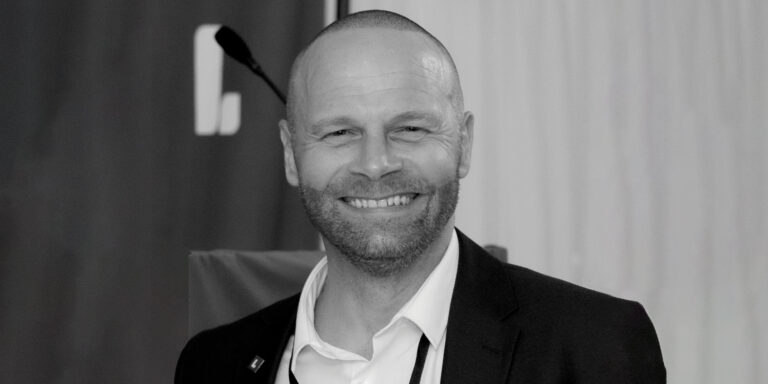
The way we recognise leadership potential, including deciding who gets the opportunity to develop it, is broken, resulting in bias. So says Rohan Whitehead, coordinator at the Institute of Analytics. “Talent is not in short supply, but when we talk about leadership selection and potential, organisations still revert to familiar reference points: top-tier degrees, consulting experience, or strategic roles in finance. These backgrounds are linked to confidence and polish, but they are far from being the only places where modern leadership skills can develop.”
Such is the apparent predictability of leadership pools that experts often talk about there being a strong professional background bias to leadership, where once someone’s foot is in the door, the rest of their ascendency is secured – often because existing leaders gravitate to those with similar professional backgrounds.
This theory certainly has merit. Data shows almost half of the world’s CEOs hail from a finance and banking background.
“There is definitely a persistent professional background bias when it comes to leadership,” observes executive coach, Liz Sebag-Montefiore. “Certain roles – such as strategy, finance, or consulting – are seen as leadership pipelines, while others, such as HR or frontline roles, are overlooked, even when individuals have demonstrated strong leadership qualities.”
Simon Fabb, CEO at ChiefJobs.com, adds: “We know that leadership pathways often follow traditional routes that favour certain professional backgrounds, and – as such – are more likely to exclude talented individuals from under-represented groups.”
Dave, Mike, John and Rob
So strong are these forces still – not least when it comes to gender diversity – that for a long time there’s been an infamous business bias: someone is much more likely to become a CEO if their name is David or Michael than anything else. In 2023, 34 Davids headed one of the world’s top 1,000 largest companies, followed by 32 Michaels (with Johns and Roberts featuring fairly highly too – each led 24 of the top 1,000 companies in 2023). And in 2024, only 11 FTSE 100 companies were run by women.
Other studies have even revealed everything from stature to attractiveness are forces behind leadership selection. Some 58% of CEOs are over six feet tall (compared with 15% of the general population), while a Journal of Economics and Business study in 2023 showed how ‘more attractive people’ earned 24% more than their ‘less attractive’ colleagues, and rose to higher positions accordingly.
While these studies might well be seen as frivolous, some critics say they also reveal a harsh truth – that disproportionate levels of UK leaders are white and privately educated. Half of FTSE 100 senior executives were found to have been privately educated, compared with just 7% of the UK population. It’s a statistic that suggests very strong forces impact executives’ future career paths, resulting in bias.
Narrow pipeline
Tsvetelina Nasteva, an HR expert who is manager of human resources and talent acquisition at Casinoreviews.net, is scathing in her assessment of what these biases produce.
“Same schools, same roles, same ladder. This creates a narrow pipeline and closes the door on people who bring a different kind of value, especially those who didn’t start from the same places”
“Same schools, same roles, same ladder,” she says. “It feels safe, but it also means we keep recycling the same type of leadership. From my perspective – in HR – this creates a narrow pipeline and closes the door on people who bring a different kind of value, especially those who didn’t start from the same places.”
What should organisations do to avoid the trap of ‘expected career-pathing’ and bias? In an already uncertain business landscape, can they really afford to take a punt on otherwise good, but unproven, people?
Skills can be taught
There is, it seems, real potential for return on investment for companies who promote their own employees into first-time management roles – and that’s because sought-after leadership skills can be easily taught.
That’s the finding of research by Anne Trumbore, chief digital learning officer at the Sands Institute for Lifelong Learning at The Darden School, University of Virginia.
“We know that the lack of a degree can act as a barrier to leadership roles, and that many companies use degrees, or sometimes the school people came from, as a proxy for leadership potential,” she says. “But actually, there are collections of leadership skills that can be taught on the job, which enable workers from varied backgrounds to take on leadership roles, as long as the company invests in providing training in these important skills.”
“The C-suite needs a reset, moving away from linear, traditional paths and embracing more inclusive, skills-based progression”
Fabb believes overlooking non-traditional talent pools can harm an organisation: “If DEI isn’t embedded in how future leaders are identified and developed, organisations risk missing out on diverse perspectives that drive innovation and better decision-making,” he says. “It’s not just about hitting diversity targets, but ensuring that people from different backgrounds have real access to the experiences and mentorship needed to succeed at the top. This means remodelling recruitment, promotions and leadership development programmes to be more inclusive by design.”
Sebag-Montefiore agrees that “the C-suite needs a reset, moving away from linear, traditional paths and embracing more inclusive, skills-based progression. This isn’t just for fairness, but because the complexity of today’s world demands a wider range of lived experience and thinking when it comes to leadership.”
Making the change
The problem is that doing things differently is not easy.
“Until there is ‘real change’ – where companies actively challenge biases and create environments where leadership potential is recognised in a wider range of people, regardless of socio-economic status or appearance – leadership pipelines will favour those who fit an established mould,” says Emily van Eyssen, founder, Remote Recruitment. “Leaders should question their own assumptions about who makes a good leader.”
Gizem Sultan Kartalcik, HR specialist at Tor.app, agrees. “Companies need to stop treating leadership potential like it only comes from a certain pedigree. Diverse perspectives don’t just tick a box, they change how teams solve problems, grow and lead.”
Vicky Owens, founder and CEO of Socially Speaking Media, says: “I’ve seen leadership bias close up as a Gen Z founder who has built a social media agency without the usual corporate background. Experience isn’t about job titles or fancy degrees. The idea that good leaders only come from finance, consulting or big legacy firms is outdated and misses the point entirely.”
Peter Crush is an award-winning HR-specialist journalist, writing about all aspects of leadership and the world of work.
This article is shortened version of the lead feature first published in the Autumn 2025 issue of Edge. You can read the full version here






